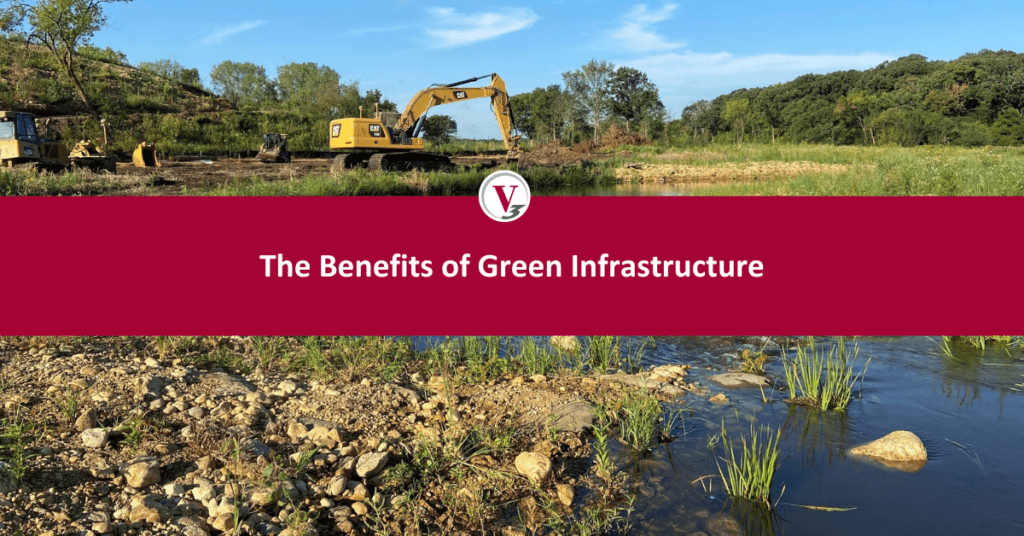Creating access to green spaces is important element of social health and wellbeing. Having explorable natural areas throughout communities increases quality of life for the people and native species who live there. Weaving green infrastructure into construction design helps promote a sustainable hydrology and brings natural elements into built areas.
What are green infrastructure projects?
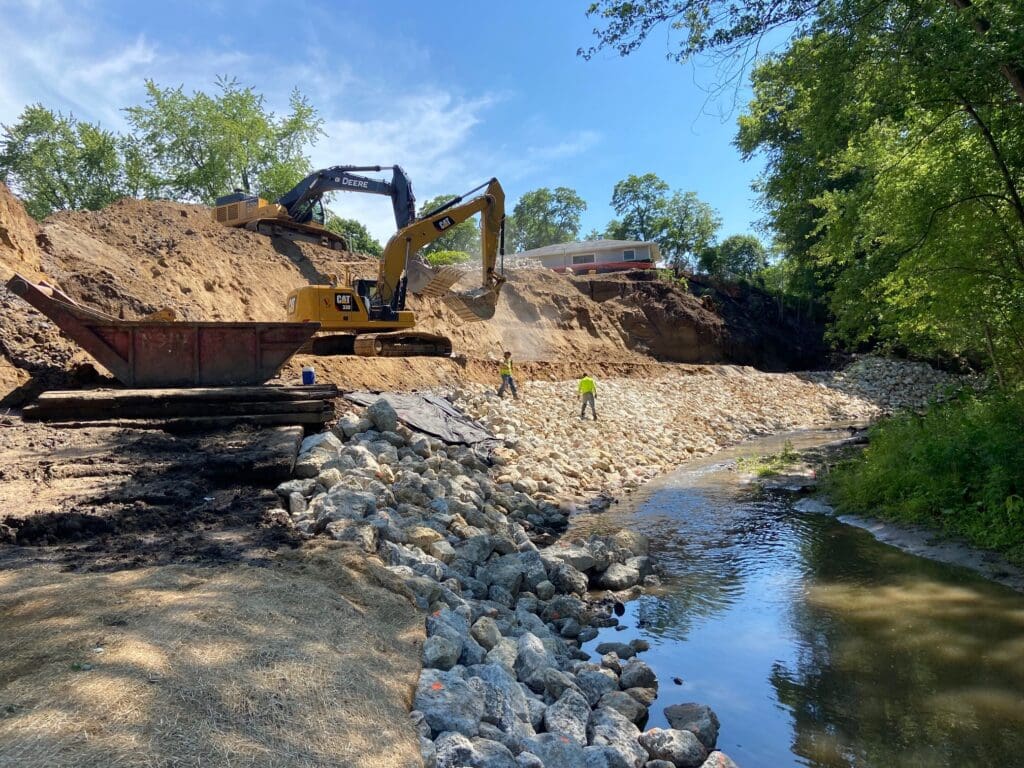
Green infrastructure refers to a network of natural and semi-natural systems that provide environmental, social, and economic benefits by enhancing natural processes. It includes a variety of practices that use vegetation, soils, and other elements to manage water to create healthier environments and provide other benefits to the surrounding communities.
Urban areas can introduce more natural elements such as green roofs, rain gardens, bioswales, and permeable pavements. These efforts are not only visually appealing, but they also collect and absorb stormwater runoff from rooftops, sidewalks, roadways, and other hard surfaces. This collection of runoff reduces flooding and improves water quality by filtering out pollutants before travelling downstream to our ponds and waterways.
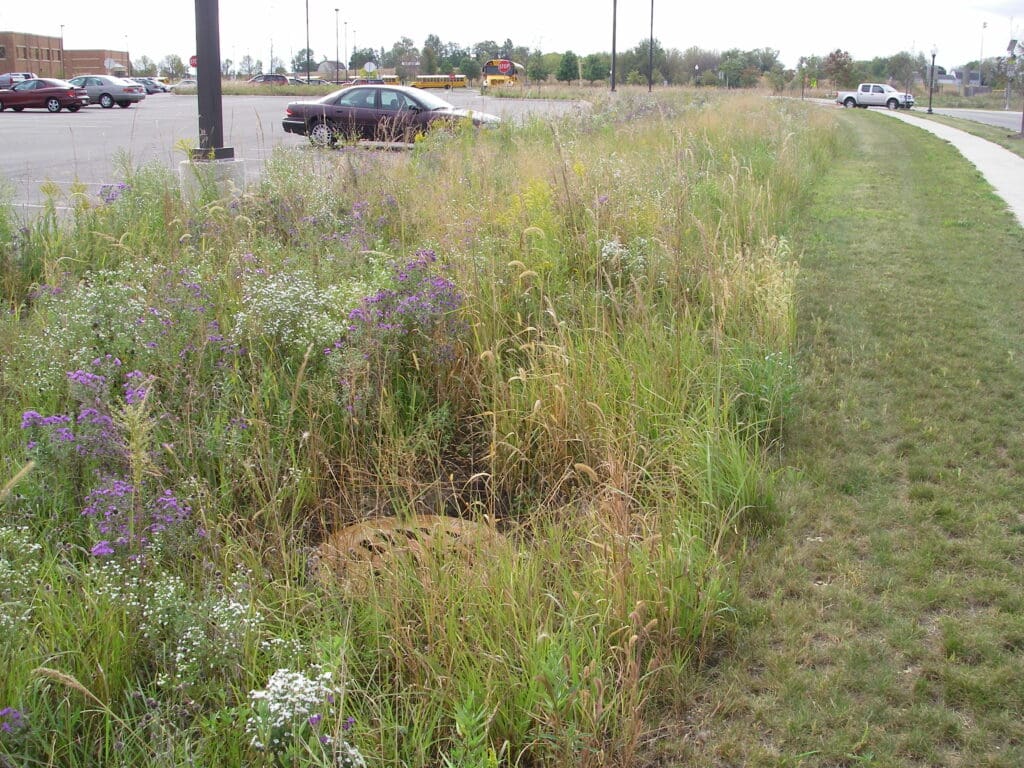
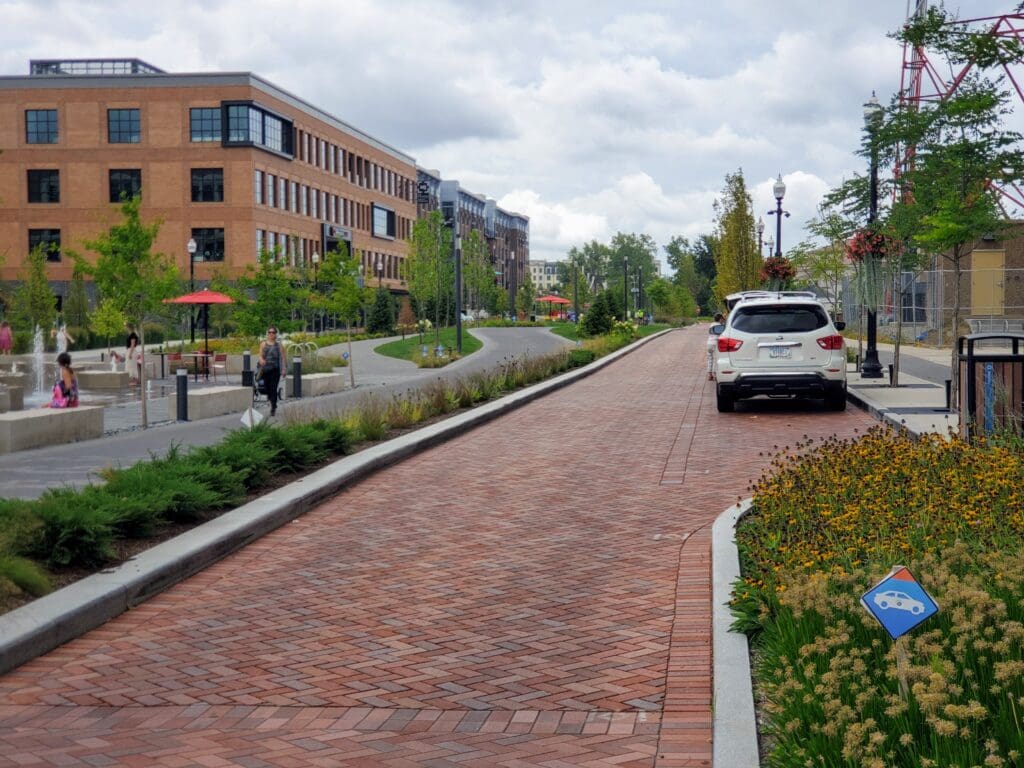
In open areas, and in addition to utilizing urban green infrastructure, the opportunity exists for restoration and preservation of wetlands, forests, streams, and more. Over time, these spaces can fall victim to erosion, pollution, or encroachment from invasive species, making it difficult for the native flora and fauna to thrive. Reestablishing meandering waterways, stable streambanks, and diverse native vegetation in our wetlands will provide significant benefits to our surrounding environment. Benefits include:
- Reducing flooding
- Improving water quality
- Restoring natural habitats
- Boosting biodiversity
- Creating recreational opportunities
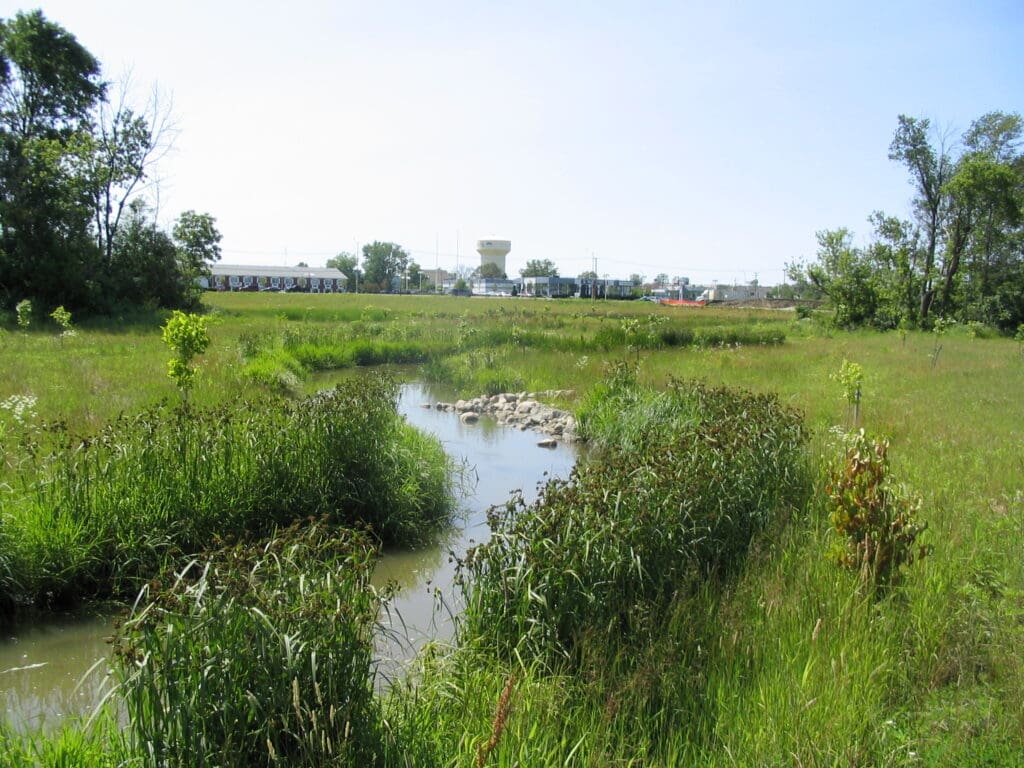
What should I do to stabilize my pond slopes?
Every neighborhood and commercial development have detention/retention basins that have a primary function to detain and control stormwater. However, each of these stormwater facilities have other functions that range from recreational to aesthetic. All stormwater basins are at risk of erosion due to the change in water elevation during and after storm events, frozen conditions in the Midwest, movement of water along the slopes, muskrats and other animals that disturb the ground, as well as other impacts. This erosion causes poor water quality, poor habitat conditions, lesser air quality, negative impact to the overall function of the basin, and overall poor aesthetics.
Many basins are constructed with turf grass on the slopes. The root system of turf is very shallow and less effective at promoting water infiltration, filtering of pollutants, and stabilization of the soils. Why not simply add a band of limestone rip rap around the water line? This is a common construction practice and while the rock does provide resistance to erosion, water movement still erodes the slope behind the rock, as well as the interface of rock and turf grass is an erosion point.
A more effective solution is to provide native vegetation on the slope of the basin. This can be coupled with using rip rap at the water’s edge if desired, but the deep roots of native vegetation provide that stabilization needed to protect against erosion. Most of these roots extend several feet below the surface! Establishing this native vegetation increases soil permeability that reduces runoff, increases filtration of pollutants prior to reaching downstream waterways, increases biodiversity of wildlife and pollinators, and provides a pleasing aesthetic!
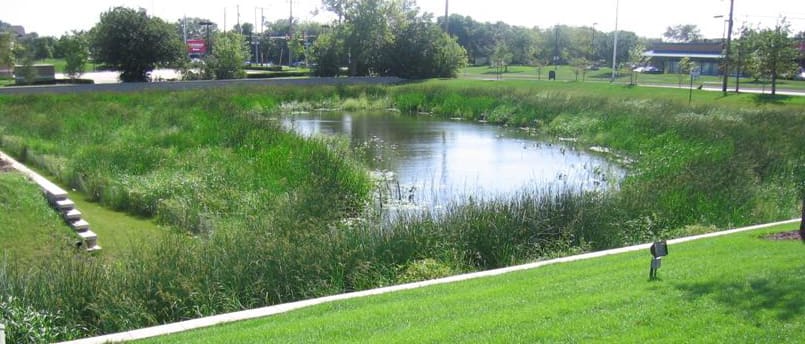
Protect natural environments with V3
V3’s multidisciplinary team has extensive experience in restoring and preserving natural environments. We understand the practical needs of our client and how to balance those goals with effective and sustainable solutions. Our experts work across specialties for transformative results that benefit our community and surrounding environment. Connect with our team to learn more.

